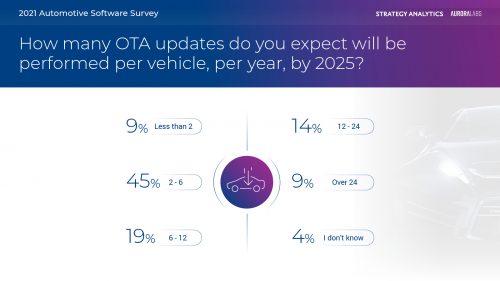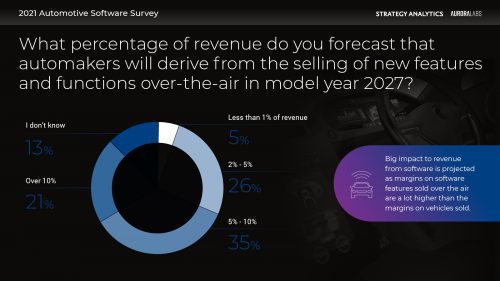While doing a bit of research to write this blog, I came across an interesting thought, “In a nutshell, being proactive is the same thing as being reactive. The only difference is: you do the reacting ahead of time.”
Auto manufacturers have raised OTA update solutions to the top rung of the technology ladder bringing the deployment of OTA update technology from a reactive afterthought to a proactive strategic play in the development of automotive software.
OTA – Proactive, not Reactive – Be Strategic
Strategically integrating a new generation of AI-based over-the-air (OTA) update technology into the software development toolchain enables the OTA solution to be proactive – and react ahead of time – by learning software behavior during the development process. This means, when the vehicle leaves the production line, the software is already being understood and anomalies can be acted on proactively based on data and learnings done early in the process.
OTA – Expanded Functionality
This leads to the second point about the strategic nature of OTA technology. Not only is the application of the technology “shifting left,” and finding itself in the development toolchain, OTA technology solutions have also matured beyond their original intent. In addition to creating and deploying the update file, today’s solutions can monitor, detect, understand and validate software behavior. Today’s OTA solutions need to be more intelligent than the solutions that came into the automotive industry as a spinoff technology from the mobile phone industry. Today’s solutions need to be developed for the vehicle – because the vehicle is a heck of a lot more complicated than a mobile phone and there is human life relying on the vehicle software intelligence embedded in today’s cars.
OTA – Cost Consideration and Frequency
Putting detailed costs of delivering OTA updates has never been discussed in the aisles or on stage at MWC, ELIV, CES or the Detroit Auto Show. Mainly, because of the reasons discussed above -OTA updates were done infrequently, only as bug fixes, and only to the head unit and TCU. This is changing and the cost of OTA updates need to be looked at under a microscope. According to a recent Automotive Software Survey, with 140 respondents from the automotive industry – it is expected that moving forward, there will be, at least one update per quarter – updating features and functionalities in the entire car.
Costs to consider include:
– Cloud-to-vehicle communications and data transmission costs
– Endpoint update technology integration costs
– Endpoint update memory costs
– Cloud storage costs
(To learn more, download the Cost Consideration Guide with Simulator.)
OTA – Money Maker
Here is where it gets really interesting and where it becomes blatantly clear that auto OEMs need strategic and proactive over-the-air update plans. Not only is OTA update technology shifting left, delivering more functionality and being leveraged more often for more ECUs – it is also on the path of becoming a major revenue stream for auto manufacturers. Based on the survey mentioned above, more than one-fifth of industry experts expect software sales to account for at least ten percent of carmakers’ sales as early as 2027








 5 min read
5 min read